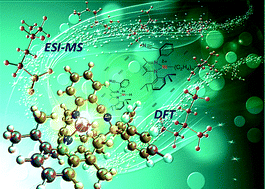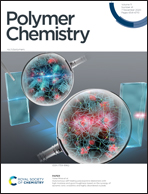Mechanistic study of the competitiveness between branched and linear polyethylene production on N-arylcyano-β-diketiminate nickel hydride†
Abstract
This paper provides a guide to identify and understand the mechanistic origin of the catalytic activity and selectivity in the production of linear and branched polyethylene through a nickel hydride catalyst. Nickel active species were experimentally detected through ionization mass spectrometry experiments during ethylene polymerization from neutral diketiminate nickel pre-catalyst LNi(η3-allyl) activated with B(C6F5)3. Density functional theory (DFT) calculations were performed to investigate the competitiveness between linear and branched polymer formation in nickel hydride species, indicating that the branching degree of the obtained polyethylene was reduced by steric effects of the ligand at the nickel center, as well as by stabilization of intermolecular non-covalent interactions with the growing polymer chain at the secondary coordination sphere. The highest probability of branched-chain formation was 25% (at 343 K). Additionally, linear PE formation is attributed to an increased insertion rate (higher TOF) relative to the chain walking rate (lower TOF). This work could provide information on the rational design of similar metal hydride catalysts.



 Please wait while we load your content...
Please wait while we load your content...